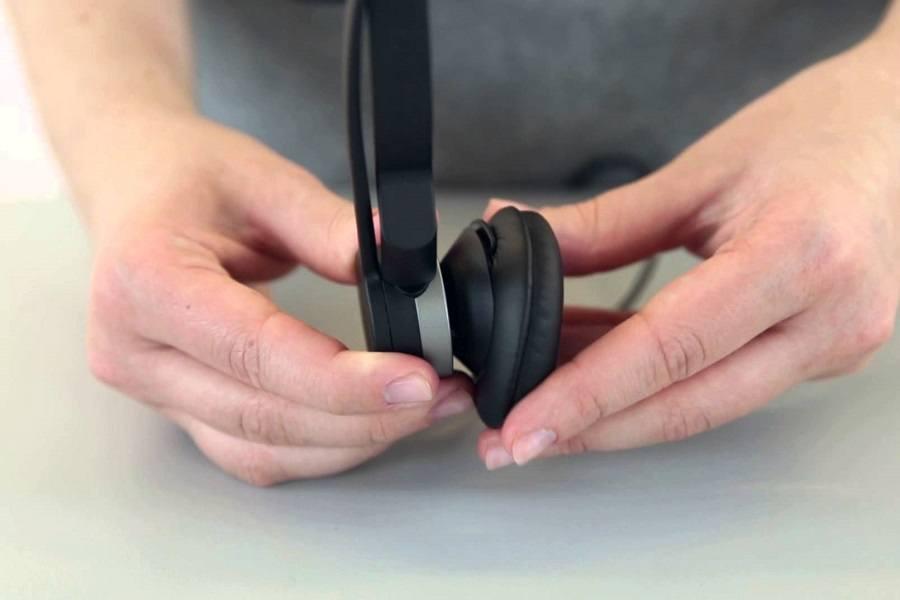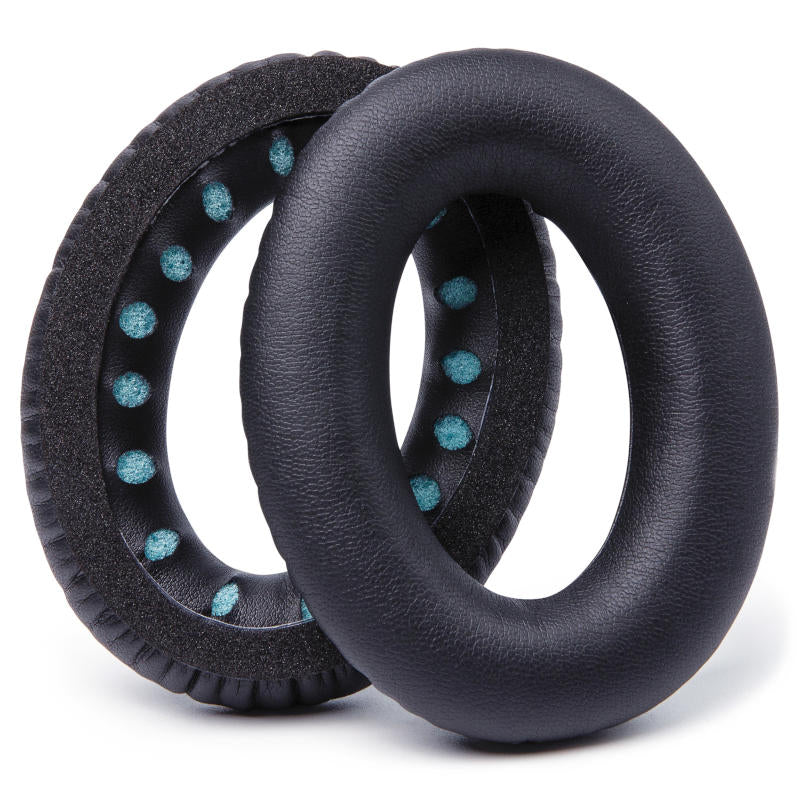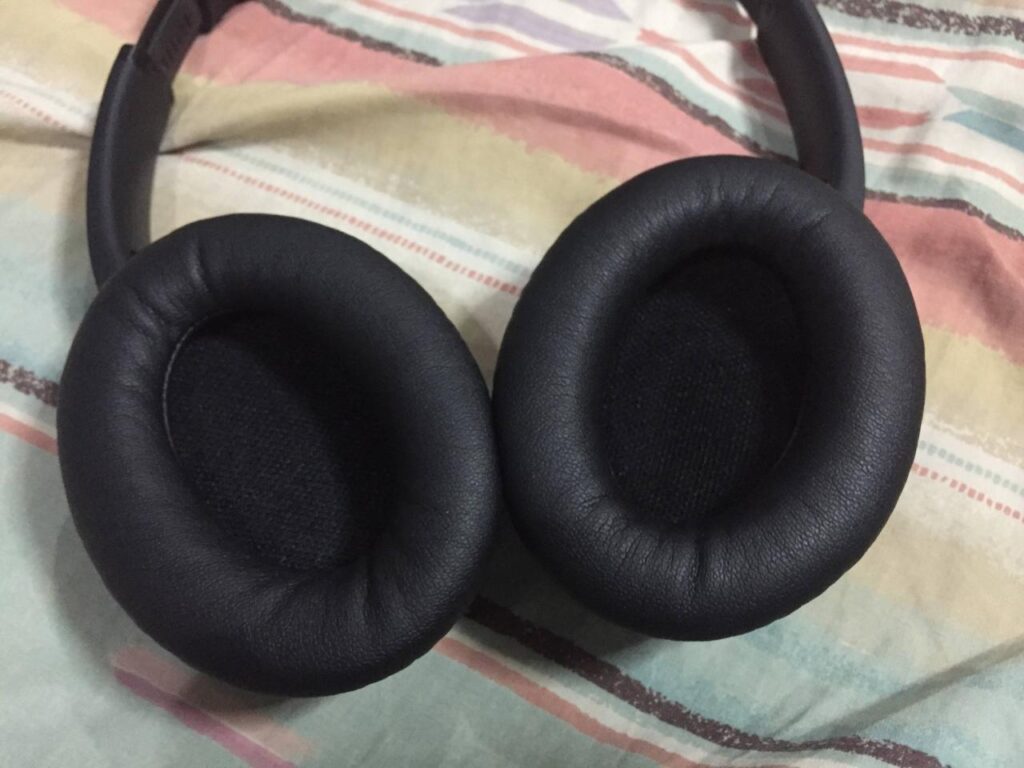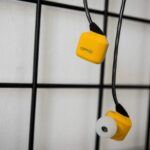Maintaining headphone cushions for long-term use is crucial for preserving sound quality and comfort. Proper care extends the life of your headphones, preventing premature wear and tear. This guide explores various materials, cleaning techniques, preventative measures, and troubleshooting to keep your headphones in top condition.
Different headphone cushion materials have varying durability and longevity. Understanding these differences allows you to choose the right care strategy for your specific headphones. We’ll delve into the pros and cons of each material and offer step-by-step cleaning instructions.
Headphone Cushion Materials

Headphone cushions play a crucial role in overall audio experience and comfort. Their material significantly impacts the longevity and performance of headphones. Choosing the right material for your needs is key to maintaining optimal headphone function over time.Different materials offer varying degrees of comfort, durability, and sound quality. Understanding the properties of each material is essential for selecting the best option for your specific usage and preferences.
Careful selection and maintenance contribute to a longer lifespan for your headphones.
Common Headphone Cushion Materials
Various materials are used in headphone cushions, each with its own characteristics. These characteristics influence comfort, sound quality, and durability.
- Leather: Leather cushions are often sought after for their premium feel and aesthetic appeal. They offer a relatively smooth surface, often contributing to a refined listening experience. However, they can be more susceptible to damage and require careful maintenance to prevent cracking or drying. Genuine leather, for example, is more durable than faux leather but also more expensive.
- Protein Leather: Protein leather is a synthetic material that mimics the look and feel of leather. It’s generally more affordable than genuine leather and is known for its durability. The material is often more resistant to cracking compared to traditional leather, offering a longer lifespan. However, its sound-dampening capabilities might be slightly less than leather.
- Memory Foam: Memory foam cushions provide exceptional comfort due to their ability to mold to the shape of the user’s head. This creates a snug and immersive experience. Memory foam cushions typically offer good sound isolation, resulting in a clearer audio experience. Over time, memory foam can lose its shape-retaining qualities, impacting its comfort level. For example, memory foam can become flattened after extended use.
- Velour: Velour cushions are often preferred for their soft and plush texture, providing a comfortable listening experience. They are usually more affordable than other materials. Velour’s sound absorption properties may affect the overall sound quality slightly. However, they can easily be damaged by spills or abrasions, potentially requiring replacement more often than other materials.
Durability and Longevity Comparison
The longevity of headphone cushions varies significantly depending on the material.
| Material | Durability | Longevity |
|---|---|---|
| Leather | High (genuine), Moderate (faux) | High (genuine), Moderate (faux) |
| Protein Leather | High | High |
| Memory Foam | Moderate | Moderate |
| Velour | Low | Low |
Cleaning and Maintenance Procedures
Proper cleaning and maintenance procedures are crucial for extending the lifespan of headphone cushions.
- Leather: Clean leather cushions with a soft cloth dampened with a mild soap solution. Avoid harsh chemicals or abrasive cleaners. Allow the cushions to air dry completely. Periodically apply a leather conditioner to maintain its flexibility and prevent cracking.
- Protein Leather: Clean protein leather with a soft, damp cloth and a mild detergent. Rinse thoroughly and let air dry. Avoid excessive moisture or harsh chemicals. Apply a leather protector if necessary to enhance its durability.
- Memory Foam: Gently clean memory foam cushions with a soft, damp cloth and a mild soap solution. Avoid excessive moisture or scrubbing. Allow the cushions to air dry completely to prevent mold or mildew buildup. Avoid exposing them to direct heat or sunlight.
- Velour: Clean velour cushions with a soft, damp cloth and a mild detergent. Avoid harsh chemicals or scrubbing. Air dry the cushions thoroughly. If possible, spot clean any spills immediately to prevent damage.
Sound Quality and Comfort Over Time
The perceived sound quality and comfort of headphone cushions can change over time depending on the material.
| Material | Sound Quality (initial) | Sound Quality (long-term) | Comfort (initial) | Comfort (long-term) |
|---|---|---|---|---|
| Leather | Clear, Detailed | Potentially less clear, less detailed | Premium | May decrease due to wear |
| Protein Leather | Clear | May slightly decrease over time | Comfortable | Generally comfortable |
| Memory Foam | Immersive, isolating | May decrease in comfort due to shape change | Excellent | Comfort can degrade over time |
| Velour | Muted | Muted, but relatively stable | Very comfortable | Can lose softness |
Cleaning and Maintenance Techniques

Proper cleaning and maintenance are crucial for extending the lifespan of your headphone cushions and preserving their comfort and sound quality. Neglecting these aspects can lead to accelerated wear, reduced sound isolation, and the development of unpleasant odors. A well-maintained headphone cushion ensures a consistent and enjoyable listening experience.Maintaining the cleanliness of headphone cushions is a straightforward process that involves careful handling and appropriate cleaning solutions.
Regular cleaning prevents the buildup of dirt, dust, and debris, which can degrade the cushioning material and impact sound quality. Addressing potential issues like mold and mildew buildup early on is vital for preventing damage and maintaining hygiene.
Cleaning Solutions and Their Effectiveness
Various cleaning solutions can be used for headphone cushions, each with varying degrees of effectiveness. Mild dish soap solutions are generally suitable for most materials, offering a safe and effective approach for daily cleaning. For tougher stains or more stubborn debris, a specialized headphone cleaning solution can be more effective. It’s important to consider the specific material of the cushion when selecting a cleaning solution to avoid damage.
Step-by-Step Cleaning Guide
This step-by-step guide provides a structured approach to cleaning headphone cushions without causing damage.
- Preparation: Gather necessary materials, including a soft-bristled brush, a mild cleaning solution (like a diluted dish soap solution), a clean cloth or sponge, and a soft towel for drying. Ensure the headphone cushions are completely detached from the headphones before cleaning.
- Gentle Cleaning: Apply a small amount of the cleaning solution to the brush or cloth. Gently scrub the surface of the cushion, paying close attention to any visible dirt or debris. Avoid harsh scrubbing or excessive pressure that could damage the material.
- Rinsing: Rinse the cushion thoroughly with clean water to remove any residue of the cleaning solution. Ensure the water is completely clear before proceeding.
- Drying: Carefully blot the cushion dry with a soft towel, ensuring no water remains trapped within the cushion. Allow the cushion to air dry completely in a well-ventilated area, away from direct heat or sunlight. Avoid using a hair dryer or other heat sources to expedite the drying process, as this could potentially warp or damage the material.
- Reassembly: Once the cushion is completely dry, reattach it to the headphones. If the cushion is removable, check for any loose threads or damage to the fabric. If present, consult the headphone manufacturer’s instructions for repair options.
Cleaning Methods for Different Cushion Materials
The suitability of cleaning methods depends on the specific material of the headphone cushion.
| Cushion Material | Recommended Cleaning Method |
|---|---|
| Leather | Use a specialized leather cleaner and a soft cloth. Avoid harsh chemicals or excessive moisture. |
| Fabric (e.g., microfiber, suede) | Use a mild dish soap solution and a soft-bristled brush. Rinse thoroughly and air dry completely. |
| Memory Foam | Gently wipe with a damp cloth and mild soap solution. Air dry completely, avoiding direct heat. |
| Synthetic Materials | Similar to fabric; use a mild soap solution and a soft brush. Air dry completely. |
Preventing Mold and Mildew
Maintaining proper hygiene is key to preventing mold and mildew buildup on headphone cushions. Regular cleaning, adequate ventilation, and prompt drying are crucial steps in preventing these issues. If mold or mildew is already present, carefully address it by cleaning the affected area with a diluted bleach solution (1 part bleach to 10 parts water). Thorough rinsing and drying are essential to prevent re-growth.
Importance of Thorough Drying, Maintaining headphone cushions for long-term use
Thorough drying is essential to prevent mold and mildew growth and maintain the integrity of the headphone cushions. Moisture trapped within the cushions can create a breeding ground for these issues. Ensuring complete dryness is a critical step in preventing damage and maintaining the longevity of the headphone cushions.
Preventing Cushion Degradation
Maintaining headphone cushions for extended use hinges on understanding the factors that contribute to their degradation. Proper care, storage, and handling are crucial to extending the lifespan of these essential components. By proactively addressing potential issues, you can significantly prolong the comfort and performance of your headphones.Headphone cushions are susceptible to various forms of damage, impacting both their aesthetic appeal and functional properties.
Preventing these issues is achievable through mindful practices and an understanding of the contributing factors. These factors range from environmental influences to improper handling techniques. Addressing these vulnerabilities is key to ensuring the longevity of your headphones.
Factors Contributing to Cushion Degradation
Several factors can accelerate the deterioration of headphone cushions. Exposure to excessive moisture, such as sweat, can lead to material breakdown and discoloration. Direct sunlight, with its intense UV rays, can also cause fading and hardening of the materials. Improper storage methods, including compression or exposure to extreme temperatures, can warp or deform the cushion shape.
Preventative Measures
Implementing preventative measures is essential for extending the lifespan of your headphone cushions. Avoid using headphones during intense workouts or activities that produce significant perspiration. When possible, store headphones in a cool, dry environment, shielded from direct sunlight. Maintaining a consistent temperature and humidity level is optimal for preserving the integrity of the cushion materials. Using protective covers for storage can provide an additional layer of protection against dust and other environmental contaminants.
Handling Precautions
Handling headphone cushions with care is vital for preventing damage. Avoid excessive pressure or force when applying cleaning solutions. Employing gentle scrubbing motions can help maintain the integrity of the cushion’s shape. Do not use abrasive cleaners or harsh chemicals that may damage the materials. Sharp objects should be avoided to prevent punctures or tears in the cushions.
Storage Methods for Preservation
Proper storage is crucial for maintaining the shape and condition of headphone cushions. Storage methods should be selected based on their ability to prevent deformation and maintain the cushion’s original shape. Using soft, padded containers or specialized headphone cases can provide cushioning and support, protecting against pressure points that might deform the cushions. Avoiding extreme temperatures is critical to preserving the elasticity of the materials.
Storage Method Effectiveness
| Storage Method | Effectiveness in Preserving Cushion Quality | Explanation |
|---|---|---|
| Soft-padded containers | High | The cushioning effect prevents deformation and pressure points, maintaining the original shape. |
| Headphone cases | High | Designed to protect delicate components, often with compartments that prevent cushions from shifting or being crushed. |
| Plastic bags | Low | May not offer adequate protection against pressure points, leading to deformation over time. |
| Direct exposure to sunlight | Very Low | UV rays can cause material degradation and fading, significantly impacting cushion lifespan. |
Identifying and Addressing Issues: Maintaining Headphone Cushions For Long-term Use

Maintaining headphone cushions for optimal performance and longevity requires proactive identification and resolution of potential problems. Understanding the common issues and their solutions empowers users to extend the lifespan of their headphones and preserve their audio quality. Early intervention often prevents more significant damage and costly replacements.
Common Headphone Cushion Issues
Headphone cushions, like any component, are susceptible to wear and tear. Recognizing common problems allows for timely intervention, preventing further damage and extending the usable life of the headphones. These issues range from minor cosmetic changes to more significant structural problems.
- Deformation: Cushions may lose their original shape due to prolonged pressure, improper storage, or exposure to extreme temperatures. This can affect comfort and sound quality.
- Discoloration: Exposure to sweat, oil, or other substances can cause cushions to change color. This primarily affects the aesthetic appeal, but can indicate underlying wear.
- Tearing: Physical stress, such as bending or sharp objects, can lead to tears in the cushion material. Tears can compromise the cushion’s integrity and acoustic sealing.
- Loss of Elasticity: Over time, the material in the cushions can lose its elasticity, making the headphones less comfortable and impacting the sound quality.
- Moisture Damage: Exposure to moisture can lead to the growth of mold or mildew, impacting the comfort and hygiene, and potentially damaging the internal components of the headphones.
Identifying and Diagnosing Issues
Careful inspection of the headphone cushions is crucial for early detection. Visually examine the cushions for any signs of damage, such as tears, discoloration, or significant deformation. Pay attention to the texture and feel of the material; a noticeably stiff or rough texture might indicate material degradation. Assess the overall shape and size of the cushions.
Troubleshooting and Solutions
The approach to resolving issues depends on the severity of the damage. Minor issues can often be addressed with simple cleaning and maintenance techniques. More significant problems may necessitate replacing the cushions.
- Minor Deformation: If the deformation is slight, gently manipulating the cushion material may help restore its shape. Avoid excessive force to prevent further damage. Alternatively, applying heat (e.g., a hair dryer on low) can sometimes help, but use caution.
- Discoloration: Gentle cleaning with a mild detergent and water can sometimes remove discoloration. If the discoloration persists, consider replacing the cushions.
- Tearing/Damage: For torn or significantly damaged cushions, replacement is generally the most effective solution. Check with the manufacturer or an authorized repair service for replacement options.
- Loss of Elasticity: If the cushions have lost elasticity, replacing them is often the best course of action. Look for replacements that are made from similar materials and have similar characteristics.
- Moisture Damage: Remove the cushions immediately. Thoroughly clean them with a mild detergent and water. If the issue is mold or mildew, a solution with a mild bleach or disinfectant solution might be necessary. If the problem persists or affects the internal parts of the headphones, professional repair is recommended.
Troubleshooting Table
| Issue | Diagnosis | Potential Solutions |
|---|---|---|
| Minor Deformation | Slight change in shape | Gentle manipulation, heat (carefully), or consider replacement |
| Discoloration | Change in color | Gentle cleaning, replacement if cleaning doesn’t work |
| Tearing | Visible tears or rips | Replacement |
| Loss of Elasticity | Soft, unresponsive material | Replacement |
| Moisture Damage | Mold, mildew, or excessive moisture | Thorough cleaning, replacement, professional repair if necessary |
Choosing Replacement Cushions
Properly maintaining your headphones involves more than just cleaning; selecting the right replacement cushions is crucial for optimal comfort and sound quality. Replacing worn or damaged cushions is often a cost-effective way to restore your headphones’ original performance. This section will guide you through the process of selecting compatible replacement cushions.Determining the correct replacement cushions is essential to ensure a seamless fit and functionality.
Incorrectly sized or incompatible cushions can compromise both comfort and sound quality. Identifying the right type and size is crucial to maintaining your headphone’s integrity and performance.
Determining Compatibility
Accurate identification of your headphone model is paramount for finding the correct replacement cushions. Consult the manufacturer’s website or user manual for precise specifications, including model numbers and compatible cushion part numbers. This information will help ensure the cushions fit perfectly and perform optimally.
Identifying the Correct Size and Type
Determining the precise dimensions of the replacement cushions is crucial for a proper fit. Measurements should be taken from existing cushions, if possible. Manufacturers often provide detailed specifications, such as diameter and depth, in their product listings or manuals. Reviewing these specifications will guarantee the selected cushions will match your headphones’ original dimensions.
Locating Replacement Cushions
Finding replacement cushions can be facilitated by various online retailers. Reputable online retailers specializing in audio equipment often have extensive collections of replacement parts, including cushions for specific headphone models. These resources offer a convenient way to access various brands and types of cushions, enabling users to find suitable options. Additionally, some headphone manufacturers directly sell replacement parts through their websites.
Proper headphone cushion care is key for extended use. Knowing the signs of wear and tear, like cracking or flattened cushions, is crucial for preventative maintenance. Checking for these signs, detailed in signs of headphone wear and tear to watch out for , can help you understand when replacement is needed. This proactive approach ensures your headphones continue to provide optimal comfort and sound quality for longer periods.
Reliable Sources for Replacement Cushions
- Manufacturer websites:
- Online retailers specializing in audio equipment:
- Online marketplaces:
Direct access to replacement parts, often at competitive pricing, and guarantees of compatibility.
Offer a vast selection of replacement cushions from different brands and models. They often provide detailed product descriptions and customer reviews.
Can be a cost-effective option but require careful scrutiny of seller reputation and product authenticity.
Comparison of Replacement Cushion Options
| Brand | Model | Price (USD) | Material | Features |
|---|---|---|---|---|
| SoundWave | ComfortPro | 25 | Memory Foam | Superior comfort, noise isolation |
| AudioMax | UltraSound | 30 | Leatherette | Premium sound quality, durability |
| HeadGear | ProFit | 20 | Synthetic Leather | Excellent fit, good value |
This table provides a basic comparison of replacement headphone cushion options. Consider your budget, desired comfort level, and the specific needs of your headphones when selecting an option. Prices and features may vary depending on the retailer and specific model.
Long-Term Care Strategies
Prolonging the life of your headphone cushions involves a proactive approach, not just occasional cleaning. Consistent care and understanding of your listening habits are key to maintaining optimal comfort and sound quality over time. A well-maintained headphone set will not only sound better but also contribute to a more pleasurable listening experience.A regular maintenance schedule, tailored to your usage, is vital for preserving headphone cushion integrity.
Proper cleaning and storage practices, along with recognizing potential issues early, will greatly extend the lifespan of your investment. This proactive approach is essential to avoid premature wear and tear, ensuring your headphones remain a source of enjoyment for years to come.
Importance of Regular Cleaning and Maintenance Schedules
Regular cleaning is crucial to prevent the accumulation of dirt, oils, and debris that can compromise cushion integrity and degrade sound quality. A dedicated cleaning routine helps maintain the optimal performance of the cushions, and a clear schedule ensures consistent maintenance.
Optimizing Headphone Cushion Lifespan
Careful handling and storage practices are crucial to maintaining the long-term health of headphone cushions. Avoid placing headphones in direct sunlight or extreme temperatures, as these conditions can cause material degradation. Proper storage in a cool, dry environment, away from direct sunlight and moisture, can significantly extend their lifespan. Use a protective case when not in use to prevent damage.
Impact of User Habits on Headphone Cushion Longevity
User habits significantly influence the longevity of headphone cushions. Frequent, vigorous use can accelerate wear and tear, while gentle handling and appropriate pressure can significantly extend the lifespan. Understanding your listening habits allows for targeted maintenance, ensuring your cushions remain in optimal condition.
Monthly/Quarterly Maintenance Schedule
This table Artikels a suggested maintenance schedule for headphone cushions, adaptable to your usage. This schedule provides a framework for consistent care, enabling you to proactively address potential issues and maintain the optimal performance of your headphone cushions.
| Month/Quarter | Maintenance Tasks |
|---|---|
| Monthly |
|
| Quarterly |
|
Illustrative Examples of Well-Maintained Cushions
Well-maintained headphone cushions exhibit a consistent level of comfort and performance over time. Proper care, as Artikeld in previous sections, plays a crucial role in preserving the integrity and functionality of these components. This section provides illustrative examples of well-maintained cushions, contrasting them with those showing signs of wear.Maintaining headphone cushions involves a combination of consistent cleaning and preventative measures, minimizing the buildup of debris and the impact of environmental factors.
Understanding the characteristics of well-maintained cushions provides a clear picture of what to strive for in the long-term care of your headphones.
Characteristics of Well-Maintained Cushions
Well-maintained headphone cushions retain their original shape and texture. They exhibit a smooth, uniform surface, free from visible signs of cracking, tearing, or discoloration. The material’s elasticity is maintained, allowing for a secure and comfortable fit against the head. The cushions also display minimal or no build-up of dirt, grime, or debris.
Appearance and Feel of Well-Maintained Cushions
The appearance of well-maintained headphone cushions is generally consistent with the original product specifications. The material will appear vibrant and the color will not have faded. The texture will be soft and supple, with a noticeable degree of elasticity and resilience. Pressing the cushion should reveal a slight give that returns to its original shape immediately.
Visual Representation of Headphone Cushion Deterioration
Visual representation of headphone cushion deterioration involves a progression from minimal to significant wear. Early stages might show slight discoloration or a loss of surface smoothness. Subsequent stages may involve visible cracks or tears in the material, with a significant decrease in the cushion’s overall elasticity. Advanced deterioration will result in the cushion exhibiting a significant loss of shape and texture, potentially with noticeable deformation.
New vs. Used Cushions: Texture and Appearance
New headphone cushions typically display a bright, uniform color and a smooth, pristine surface. The material exhibits a high degree of elasticity and a noticeable springiness. Used cushions, conversely, may show signs of discoloration, particularly in areas subjected to consistent contact with the head. The texture might feel slightly hardened or less elastic, especially in areas of significant use.
Comparison of Well-Maintained vs. Worn Cushions
| Characteristic | Well-Maintained Cushions | Worn Cushions |
|---|---|---|
| Color | Vibrant, consistent with original | Discolored, faded, uneven |
| Texture | Smooth, supple, elastic | Rough, hardened, reduced elasticity |
| Shape | Uniform, intact | Deformed, cracked, torn |
| Surface | Clean, free of debris | Dirty, with buildup of dirt, grime |
| Elasticity | High, returns to original shape quickly | Low, slow return to original shape, or no return |
Closing Summary
In conclusion, maintaining headphone cushions for long-term use involves a multifaceted approach. Regular cleaning, preventative measures, and proper storage are key to extending the lifespan of your headphones. By understanding your headphones’ materials and adopting the right care strategies, you can enjoy pristine sound and comfort for years to come. Replacing cushions when necessary is also a vital part of this process.
Frequently Asked Questions
What are the most common materials used for headphone cushions?
Common materials include leather, protein leather, memory foam, and velour. Each has unique properties affecting durability and comfort.
How often should I clean my headphone cushions?
Regular cleaning, at least once a week, is recommended to prevent the buildup of dirt and debris. More frequent cleaning might be necessary depending on usage.
What cleaning solutions are safe for different cushion materials?
Mild soap and water are generally safe for most materials. Always test cleaning solutions in an inconspicuous area first to avoid damage.
What are some signs that my headphone cushions need replacement?
Significant deformation, discoloration, tearing, or a noticeable decrease in comfort or sound quality are indicators of needing replacement.


